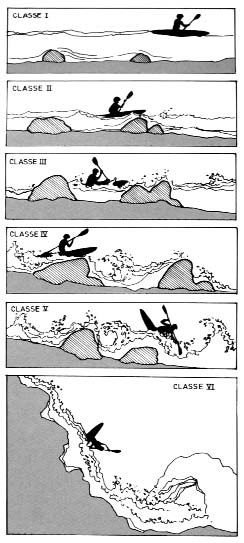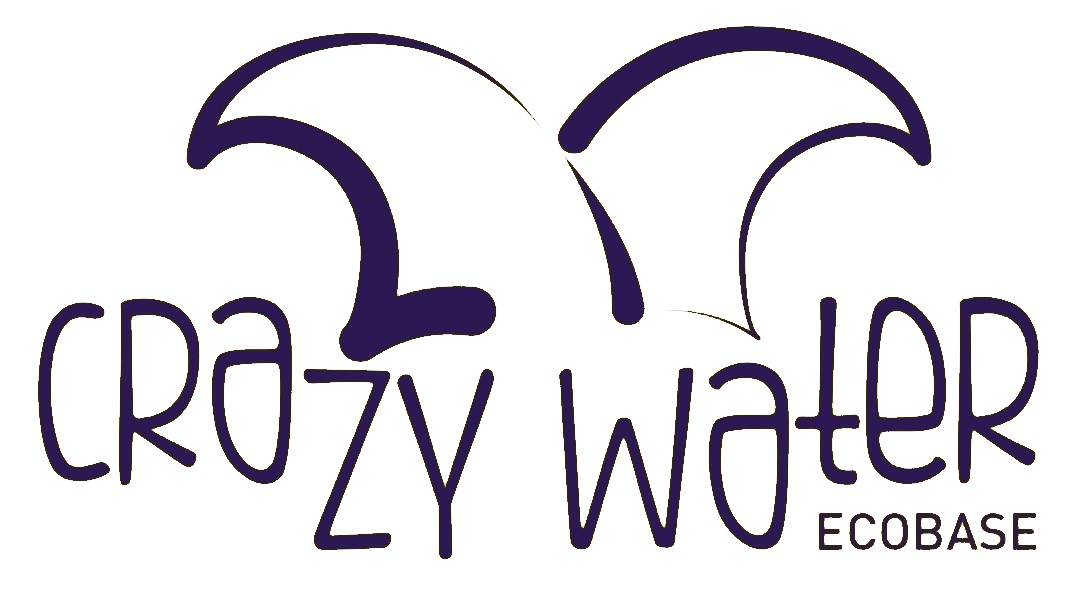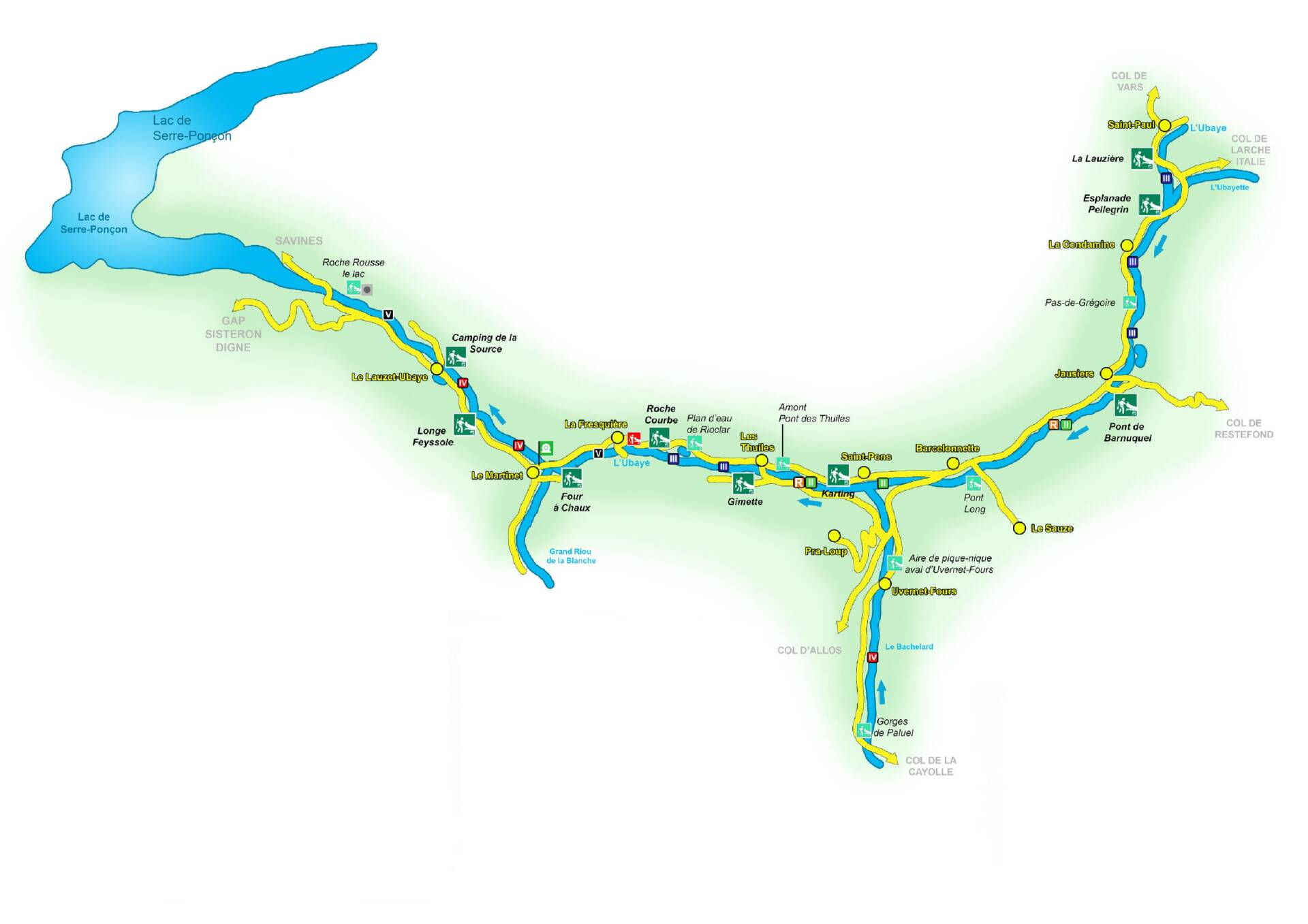Classification of rapids

Passionate of kayak, of rafting, or canoe? Are you looking for rivers offering exceptional landscapes and experiences rich in emotion?
If you choose a river which corresponds to your level and your aspirations seems complicated to you, don't worry. We are here to enlighten you. Please note that on the Ubaye river we have all classifications of rapids.
This article aims to introduce you to the concept of river class. This is a classification system that rates the difficulty and degree of commitment on a white water course. We will detail the six levels of difficulty, ranging from the simplest to the most intense, illustrating each class with examples of rivers around the globe. You'll also find recommendations for selecting a river that aligns with your experience level, equipment and safety requirements.
Are you ready to join us on this adventure? Let's embark together!
Understanding the river classification system
Before embarking on a white water adventure, it is crucial to understand the river classification system. This system helps you select a course that suits your skills and aspirations, based on technical difficulty and commitment.
Origin and importance of the ranking
The river classification was developed by the International Scale of River Difficulty (ISRD), an organization bringing together international canoeing and rafting federations. Its goal is to offer a unified scale for evaluating the white water difficulty, thus facilitating communication and increasing safety among amateurs and professionals.
This classification is decisive for choosing a route that suits your level, equipment, and climatic conditions. It predicts what you will encounter on the course, allowing you to prepare adequately. The degree of difficulty of the river may change depending on water flow, influenced by precipitation, snowmelt, or dams.
It is therefore essential to find out about the water level before leaving, and to ensure that the route is passable and authorized.
The classification criteria
Two fundamental criteria constitute the system of river classification : technical difficulty and commitment. The technical difficulty is linked to the complexity of the obstacles and the dynamism of the water encountered along the route.
This difficulty is measured by classes from 1 to 6, with 1 being the easiest and 6 the most extreme. As for commitment, it assesses the risk and complexity of rescue maneuvers in the event of an incident, graded from A to E, A being the minimum level and E the maximum.
Thus, a course can be classified, for example, into 3C or 5E. Note that this classification may differ depending on the sections of the route, and can be detailed by notations in parentheses to indicate the presence of rapids of a level higher than the overall classification. Thus, a course classified 4(5) means that it is mainly level 4, including a level 5 rapid.
Exploring the six difficulty classes
In this section, we will review the six difficulty classes that define the system of river classification. You'll learn about specific examples from rivers around the world and understand what each class entails for rowers in terms of the skills needed, equipment required, and experiences.
Class I: Very easy
Class I includes the most accessible rivers, characterized by rapid current and small waves. Obstacles are minimal, clearly visible and easy to avoid. In case of inconvenience, getting back in the saddle is simple.
This level is ideal for beginners, families, or those looking for a peaceful walk. An example of a class I river is the Loire In France.
Class II: Easy
Class II rivers are quite simple, marked by light rapids and intuitive passages. Occasional maneuvering is required, but medium rocks and waves are easily negotiated.
There is rarely a need for external assistance in the event of an incident. This level is suitable for beginners who want to challenge themselves slightly, or for intermediate level rowers who want to relax. There Dordogne in France is an example of a class II river.
Class III: Intermediate
At the intermediate level, class III rivers offer more demanding rapids and uneven waves. This involves carrying out complex maneuvers in a fast current, while perfectly controlling your boat in tight passages or near obstacles. Strong counter-currents and imposing aquatic movements may occur.
A reconnaissance of the course is recommended for less experienced rowers. Recovery is generally simple, but third-party assistance can be invaluable. This level is suitable for intermediate or advanced rowers looking for thrills. There Guisane in France perfectly illustrates a class III river.
Class IV: Difficult
Class IV rivers are renowned for their imposing and unpredictable rapids. Precise control of your boat is crucial in these turbulent waters, as is the ability to stop safely and quickly.
Expect to encounter large waves and rolls, or have to navigate narrow passages requiring quick reactions. These challenges may require well-defined trajectories in perilous conditions.
Recovering can be difficult, and assistance from a third party is often essential. This level is intended for expert rowers looking for challenges and risky adventures. L'Ubaye in the Alpes de Haute Provence is a topical example of a class IV river.
Class V: Very difficult
Class V rivers are characterized by their high difficulty. They include extremely fast long, congested or violent, requiring perfect mastery of navigation and safety. Large waves and powerful rolls, or even narrow passages requiring precise maneuvers are commonplace. The distance between quiet zones can be large, requiring excellent physical condition. The counter-currents, difficult to reach, vary from small to choppy. Reconnaissance of the route is recommended, although complex, and recovery proves complicated. Very reliable skimming is crucial. This is a level suitable for expert rowers attracted by the extreme challenge. The Zambezi River in Africa is a typical example of this class.
Class VI: Extremely difficult
Class VI marks the pinnacle of difficulty in kayaking, pushing the limits of navigability to the extreme. This requires significant experience and specific equipment. Rapids can be impassable or life-threatening, with steep falls, large waves, maelstroms and towering rocks as obstacles. The obligatory prior reconnaissance of the route may prove impractical, and recovery is almost impossible. Perfect skimming is absolutely necessary. This category is aimed at rowers looking for perilous adventures, wanting to push their limits. The Stikine River in Canada is an example of a Class VI river.
Practical meaning of each class for rowers
Below, a practical summary to understand the meaning of each river class for rowers, including skills, equipment required and sensations provided:
| Class | SKILLS | Material | Sensations |
|---|---|---|---|
| I | Minimum training | Stable and comfortable boat | Quiet stroll |
| II | Occasional maneuvers | Maneuverable and secure boat | Entertainment and relaxation |
| III | Complex maneuvers | Powerful and robust boat | Adventure and adrenaline |
| IV | Precise and fast control | Adapted boat and safety equipment | Challenge and risk-taking |
| V | Perfect mastery | Specialized boat and reinforced safety equipment | Extreme sensations and danger |
| VI | Substantial experience | Custom-made boat and maximum safety equipment | Feat quest and mortal risk |
Tips for choosing a river suited to your experience
If you aspire to start or improve in white water sports, choose one adapted river may seem complex. Fortunately, we are here to guide you!
This article will provide you with essential tips for properly assessing your level and experience, accounting for fluctuating water conditions, maximizing your safety, and getting the most out of your whitewater adventure.
Evaluate your level and experience
Start with an honest assessment of your whitewater level and experience. The objective is neither to underestimate nor overestimate yourself, but to select a course that corresponds to your real abilities and your objectives.
Check out the river ranking system we've explained and determine where you stand in terms of skill for each class. Seek the advice of an expert, such as a guide or instructor, can also prove valuable in choosing according to your profile.
Consider varying conditions
It is crucial to consider the changing conditions which can affect the level of difficulty and enjoyment of navigating a river. Water flow may vary due to seasons, precipitation, snowmelt or the action of dams. A higher flow rate can provide more challenge and excitement, while a lower flow rate can make the experience more accessible and relaxed.
Before leaving, find out on the water level and make sure that the route is passable and authorized. Sites like Eauxvives.org Or Vigicrues can provide useful information about flow of rivers in France.
Safety first: equipment and training
Never take safety lightly. Equip yourself correctly with a life jacket, a helmet, a neoprene suit, closed shoes, and a whistle. Also check the condition of your equipment such as your boat or your paddle.
Train yourself in basic techniques and safety procedures. Attending classes or joining a club can be very beneficial. And remember, it's essential not to sail alone and always let someone know your route.
Best practices for whitewater beginners
Here are some recommendations for beginners to ensure rapid and safe progression:
- Choose class I or II rivers to start, ideal for learning while having fun.
- Choose a boat corresponding to your size and level. Short and wide models are recommended for their stability.
- Master reading the water, identifying obstacles and currents from the bank before setting out.
- Learn to control your boat using your paddle and body efficiently.
- In the event of difficulty such as a capsize, remain calm and follow safety procedures. Practice skimming to learn how to stand up.
Recommendations for families and groups
For families and groups to fully enjoy whitewater sports, here is our fifth tip: engage in these friendly activities that strengthen bonds. Discover below some essential recommendations for enjoying this experience in a group:
- To ensure everyone's well-being, select a river whose difficulty is adapted to each participant, taking into account age, experience, and physical condition. Class I or II courses are recommended for their accessibility and the entertainment they offer.
- Choose a boat that suits the number of participants and the dynamics of the group, as well as the type of route planned. For a shared experience and a feeling of solidarity, group boats such as rafting or canoeing are excellent. For those looking for thrills of autonomy, kayaking or hydrospeed in individual boats are preferable.
- Being guided by a professional is crucial to benefit from appropriate supervision, sound advice, safety measures and an enriching discovery of the river. Book a guided outing or rent your equipment from a knowledgeable professional.
- It is fundamental to respect the environment, the natural setting of your activity. Avoid leaving waste, making fires, and disturbing the flora and fauna. Also be courteous to other river users, including fishermen, swimmers, and other boaters.
- The main goal is to have fun and savor every moment. White water sports offer pleasure, relaxation, escape, discovery and emotions. Always remember to smile, laugh, support and congratulate each other.
Conclusion
If you want to venture into white water sports titillates you, but you are unsure about choosing a river corresponding to your level and your aspirations, we hope that this article has dispelled your doubts. With the river rating system explained, you are now able to gauge the difficulty and commitment required for each whitewater course.
We've outlined the six levels of difficulty – from the most affordable to the most extreme – giving you specific examples from rivers around the globe. Advice on assessing your skills and experience, considering variations in conditions, ensuring your safety and maximizing the enjoyment of your whitewater adventure has also been provided.
With this knowledge of the categories of rivers, all you have to do is select the route that suits you and equip yourself adequately. Professional assistance, membership in a club or association are all options available to you.
Living these experiences with family or friends can transform these moments into memorable memories. White water sports offer not only fun and relaxation, but also escape, discovery, and a range of rich emotions.
So, without further ado, embark on the adventure!


